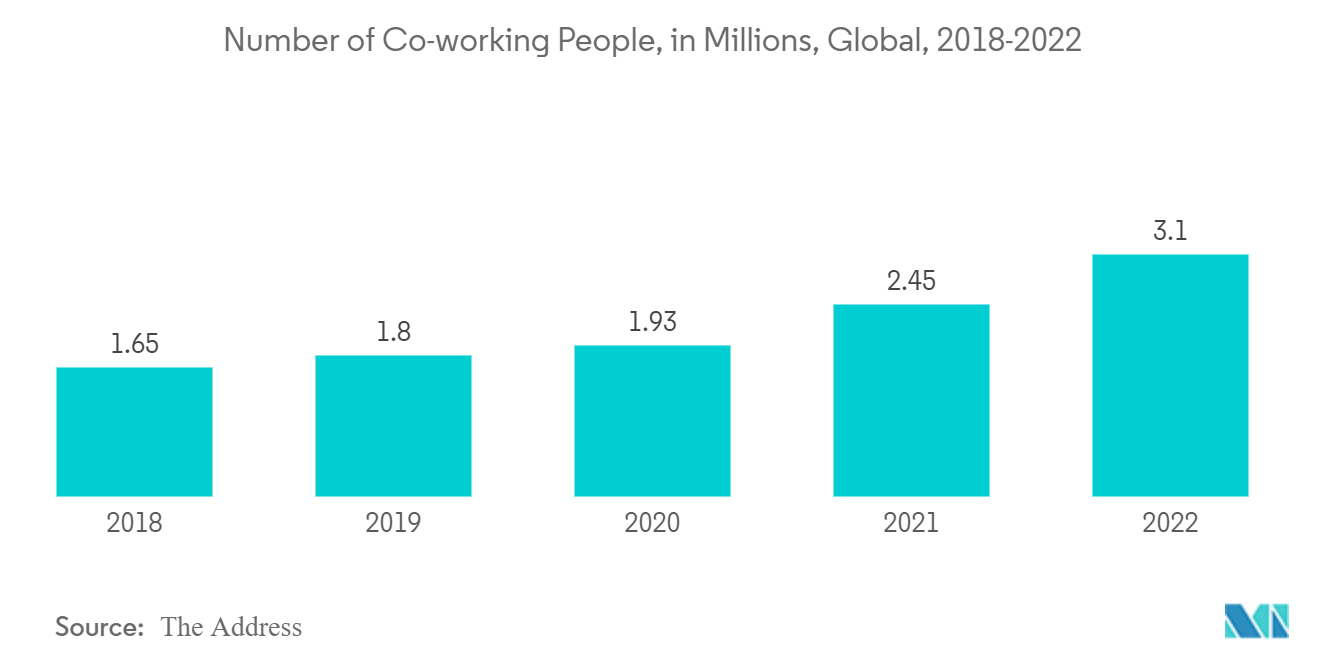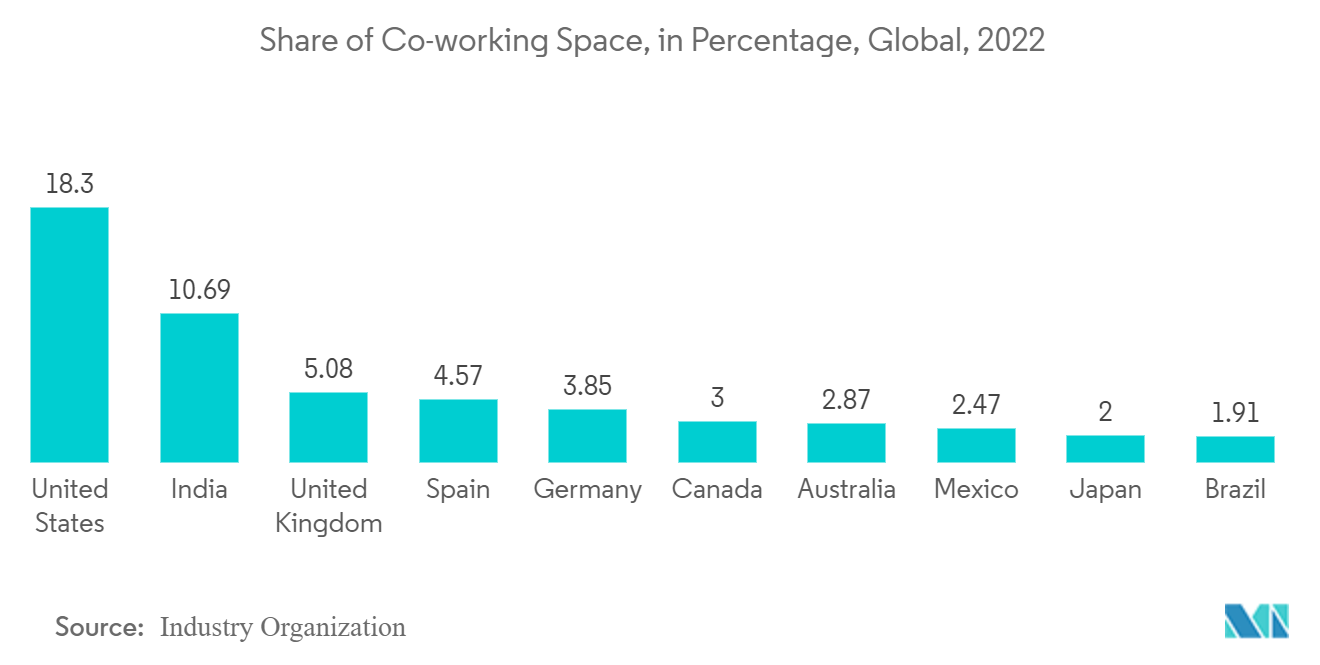Market Trends of Shared Office Spaces Industry
Increasing Number of Co-working Space Members
If people are leaving their house, they're looking for somewhere engaging, higher quality workplace experience. Shared office space is doing really well because people have revealed a preference for working this way. Coworking spaces offer a flexible work environment, allowing people to work on their own terms. Unlike traditional offices, coworking spaces offer 24/7 access, allowing members to work when they want, how they want. In the year 2023, it is projected that approximately 5.07 million individuals will join the ranks of coworking space members. The rising number of people embracing coworking is a testament to the numerous advantages it offers, underscoring its potential to shape the future of work significantly.
The utilization of coworking spaces is driven by distinct user groups, with freelancers accounting for 37% of the users, followed by entrepreneurs comprising 24%, and SMEs representing 21%. Among these groups, freelancers emerge as the most predominant users, highlighting their strong affinity towards coworking spaces. Over the years, there has been a steady rise in the number of women engaging in coworking, gradually bridging the gender gap. While the current percentage remains below the desired 50%, the encouraging news is that the trend continues to show positive momentum, welcoming an increasing number of women to the coworking movement with each passing year.

United States Leads the Shared Office Space Industry
The US has 18.3% of the world’s coworking spaces. The number of coworking spaces in the United States has been steadily increasing over the last decade. There were only 14 coworking spaces in the U.S. in 2007, 4000 in 2017, and over 6,200 estimated coworking spaces by 2022. In 2015, there were about 331,000 people using coworking spaces in the U.S. This number grew to approximately 1.08 million in 2022. Coworking spaces are most common in the very large cities, such as New York and Los Angeles, or cities with prominent technology and creative industries, such as San Francisco and Seattle. Manhattan is by far the largest single market for coworking spaces, while District of Columbia was the fastest growing state. Los Angeles is the most expensive U.S. city for coworking space.
According to Coworking Resources, the average space size in the US is about 14,000 sq ft. International Workplace Group (IWG) and WeWork are the two main providers of coworking space in the United States. In August 2022, WeWork reported its occupancy levels reached 72%, finally matching pre-pandemic numbers from the end of 2019. IWG, a global flexible-workspace network whose customers include Cisco, Uber, Microsoft, and more, says it added 2 million new members in 2021. Since many remote workers have ventured away from big cities, IWG is expanding its list of locations to include smaller U.S. towns like Kodak, Tennessee, and Bedford, New Hampshire. The company has already signed deals for more than 50 upcoming locations in the U.S. in 2022 and plans to add another 1,000 locations in 2023.
An enjoyable work atmosphere is a selling point for 70% of coworking spaces in the U.S., according to a survey. Work atmosphere as a selling point for a coworking space is at least somewhat unique to the U.S., as 70% of the country’s coworking spaces that reported this as a selling point is at or above the global average. Well-situated location, attractive design and fit-out, thriving community, good service, low prices, many events, free parking, multi-location access, internet speed, wellness emphasis are some additional selling points for U.S. coworking spaces.


